Dubrovnik: Croatia’s Pearl
Posted on October 28,2018 By John Compisi
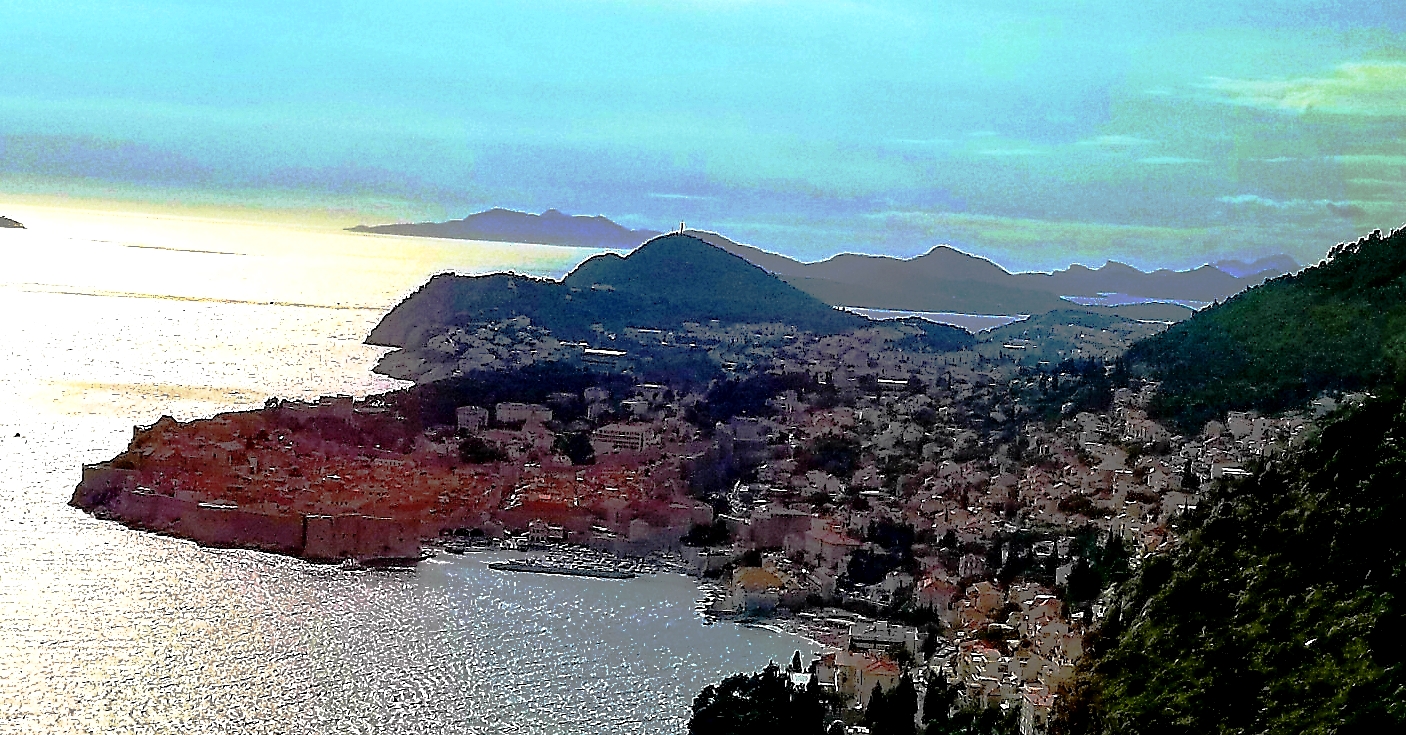
After leaving Mostar and Bosnia-Herzegovina we drove back to the coast and made our way south to the Pearl of the Adriatic, Dubrovnik. From the hills above looking down on this sparkling city by the sea you have no doubt where this historic city got its nickname.
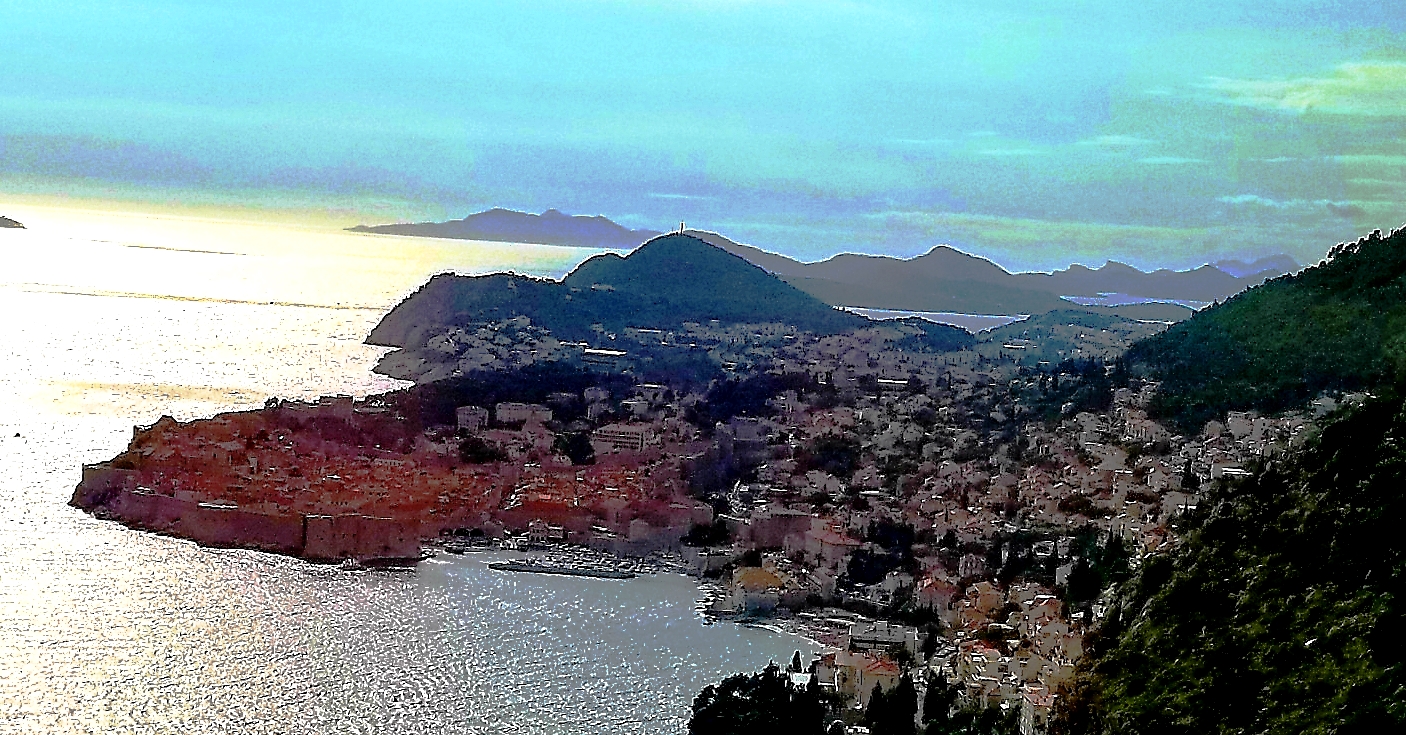 The Pearl of the Adriatic: Dubrovnik. (L.Compisi)
The Pearl of the Adriatic: Dubrovnik. (L.Compisi)
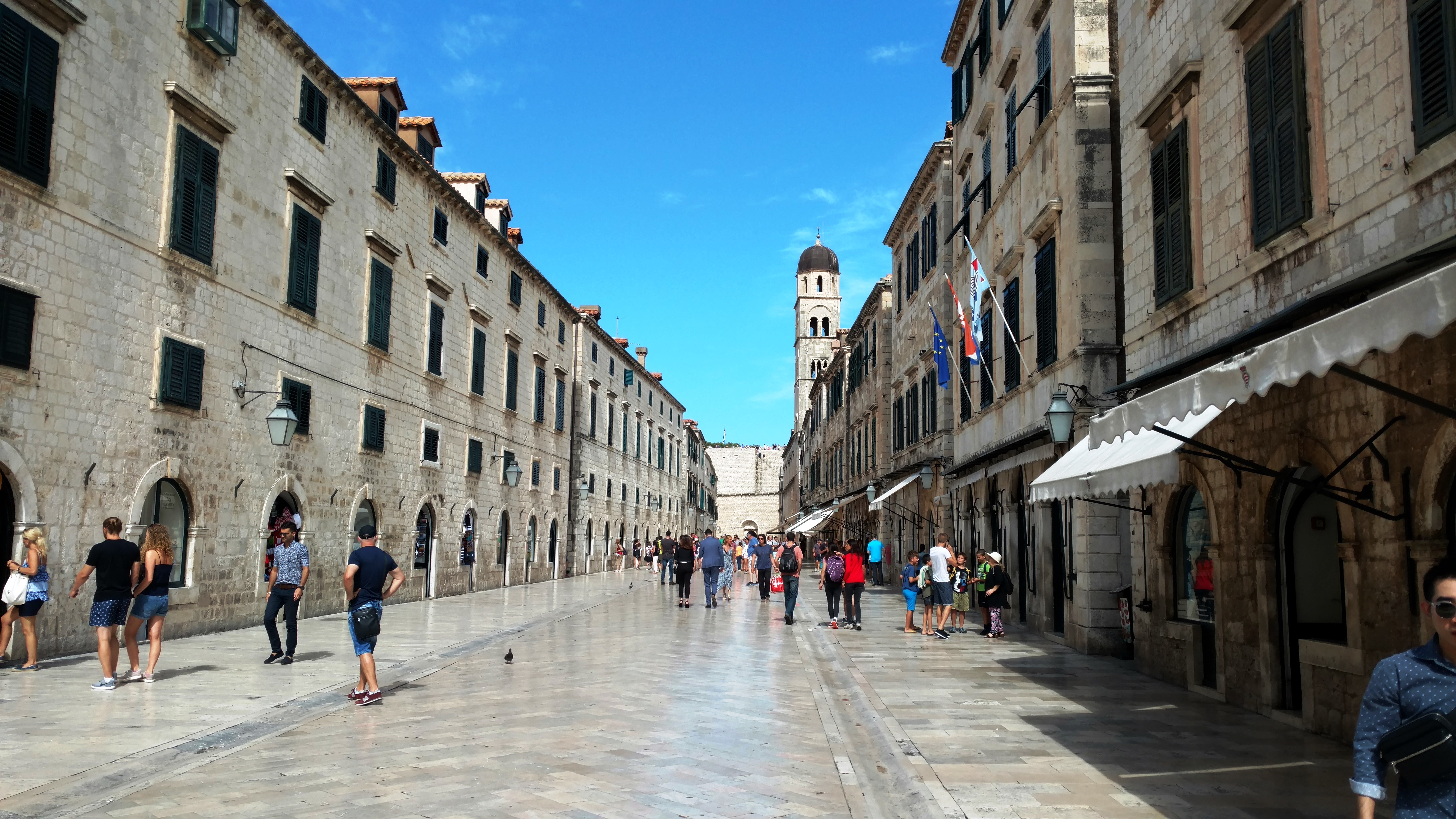 Early morning along the main boulevard inside the walls. (L.Compisi)
Early morning along the main boulevard inside the walls. (L.Compisi)
Few regions of the world have had the fortune, or misfortune to be directly affected by so many great dynasties or empires in its history. Dubrovnik (and Croatia at large) counts the Greeks, Romans, Venetians, the Byzantine Empire, the French (Napoleon), the Austro-Hungarian Empire among its masters and influencers over the centuries. It was also on the main land route from western Europe to the Middle East and Jerusalem. Dubrovnik, Ragusa in the language of Rome, carried the name the Republic of Ragusa for several centuries until 1808 and the Kingdom of Dalmatia for another century. The Venetian influence is particularly observable in the architecture of this amazing place.
 The narrow interior alleys hide special treasures. (L.Compisi)
The narrow interior alleys hide special treasures. (L.Compisi)
Upon entering the old walled-city it feels like a small town. Very hard to picture its importance as a major maritime power rivaling Venice and Ancona 500 years earlier wielding the 3rd largest Navy in the Mediterranean with only these two larger. The walls were constructed between the 14th and 15th centuries.
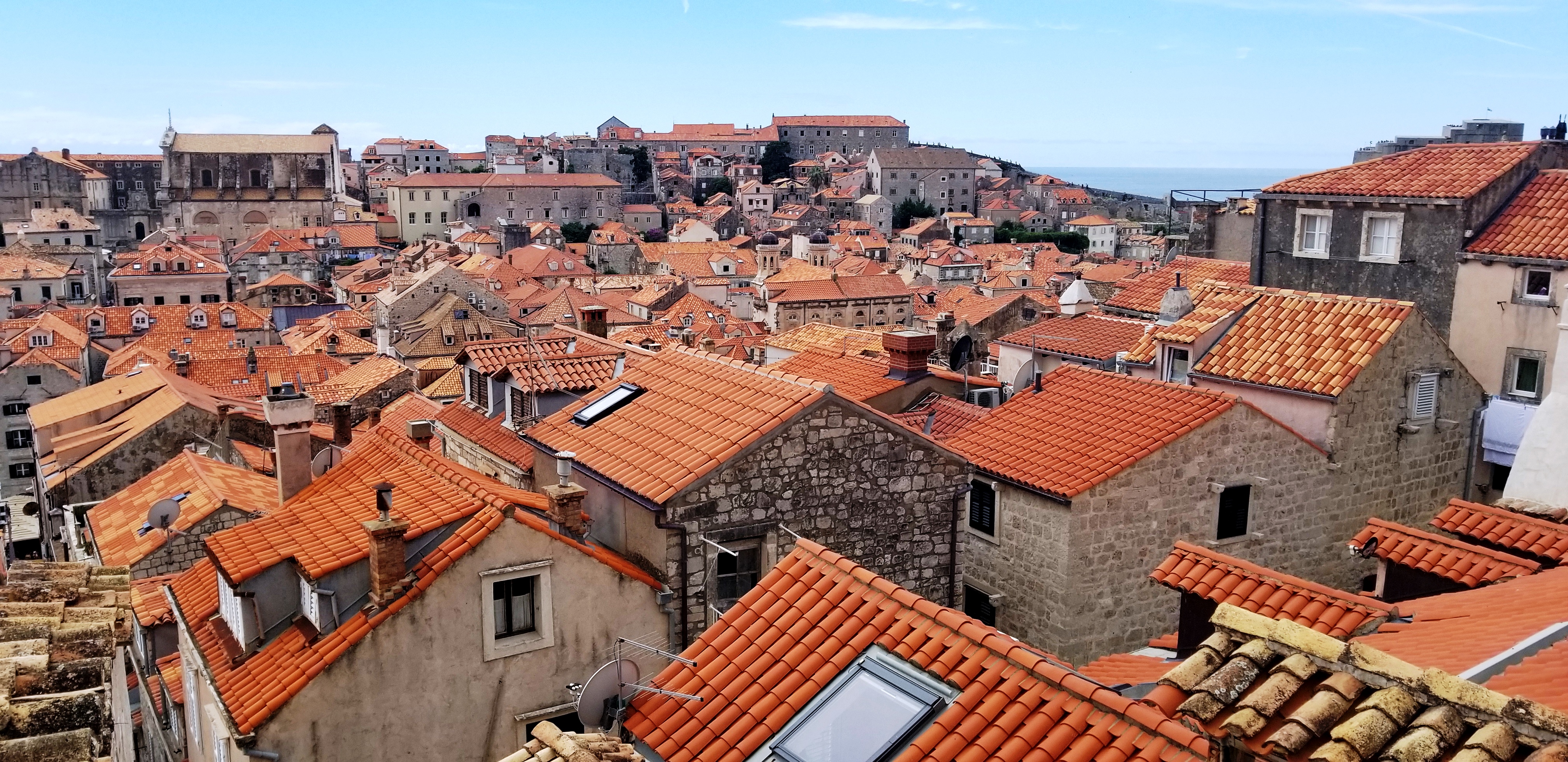 The amazing tiled roofs from the walk along the walls (L.Compisi)
The amazing tiled roofs from the walk along the walls (L.Compisi)
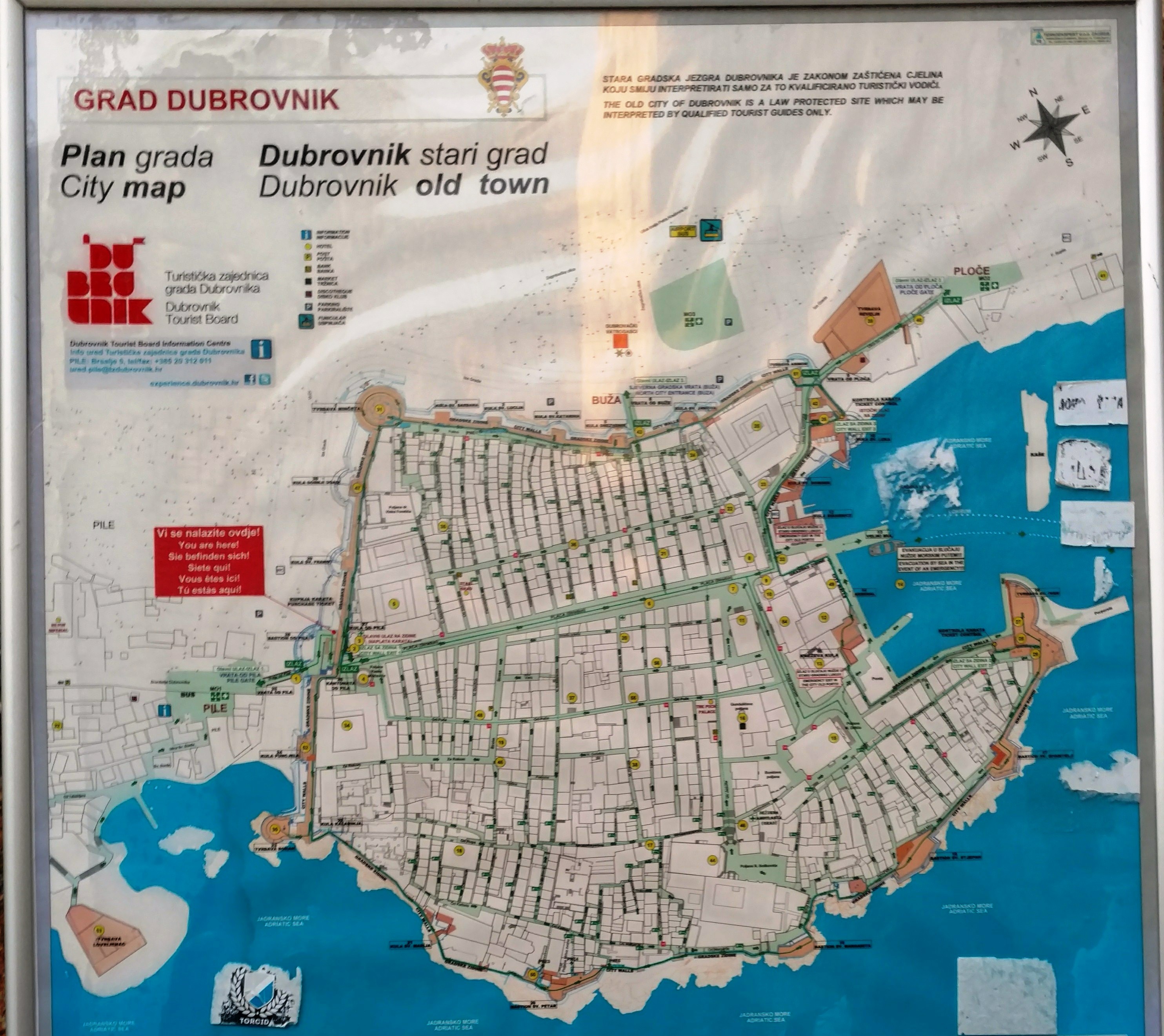 The city plan, always useful. (L.Compisi)
The city plan, always useful. (L.Compisi)
In 1979, UNESCO listed the city of Dubrovnik as a World Heritage site offering the city the prestige, protections and funding needed to assist in necessary restorations and maintenance.
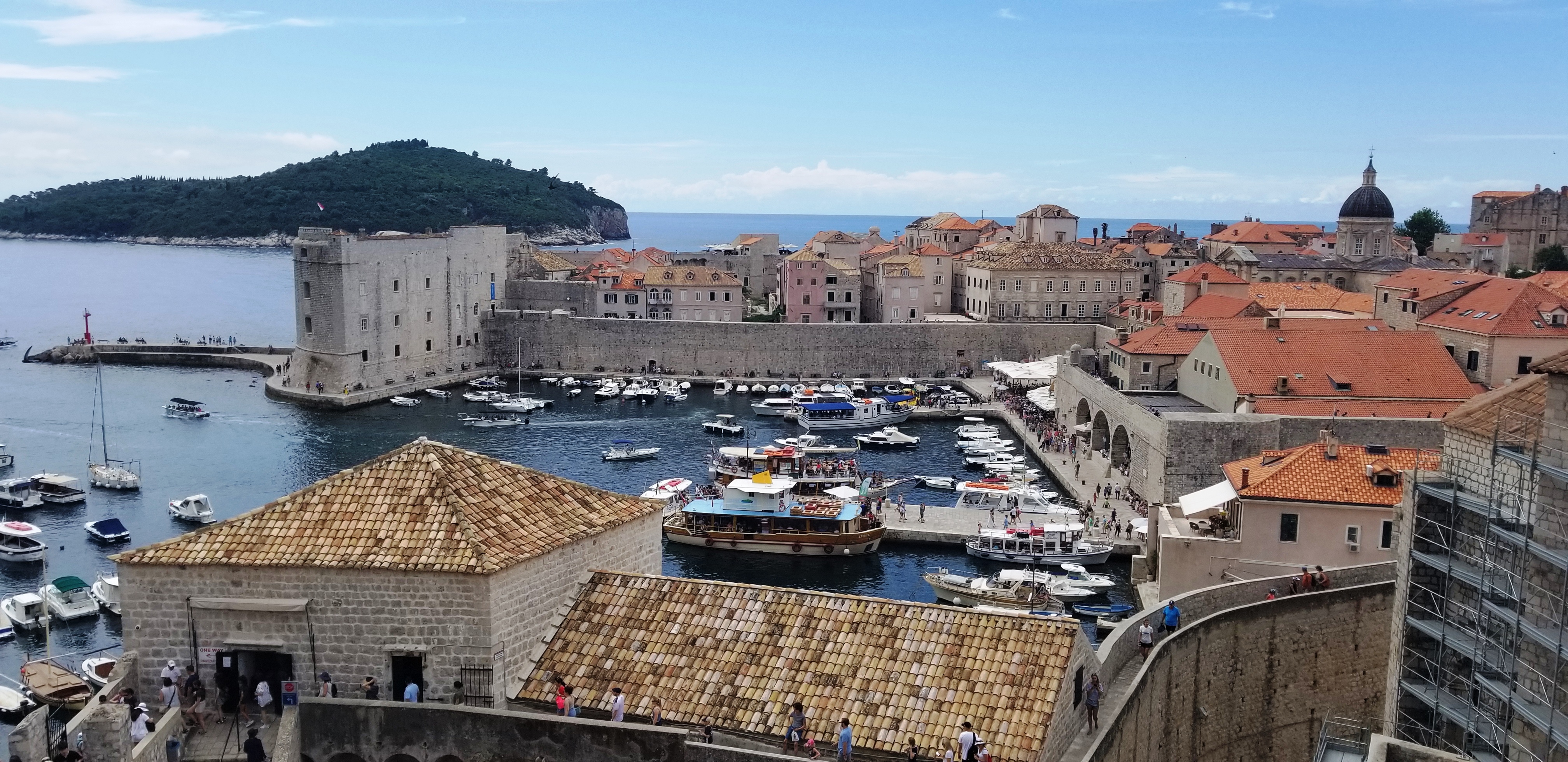 The medieval harbor from above. (L.Compisi)
The medieval harbor from above. (L.Compisi)
Dubrovnik was a center of innovation and modern thinking even in the middle ages establishing medical services (1301AD), the first pharmacy (1317AD still operating today) and an orphanage (1432AD). The Republic of Ragusa was even involved in diplomacy and trade with the American Colonies as early as 1771 and later with the American revolutionaries when they entered into a trade agreement in 1776 with the United States. The Americans agreed to allow their ships free passage into American ports.
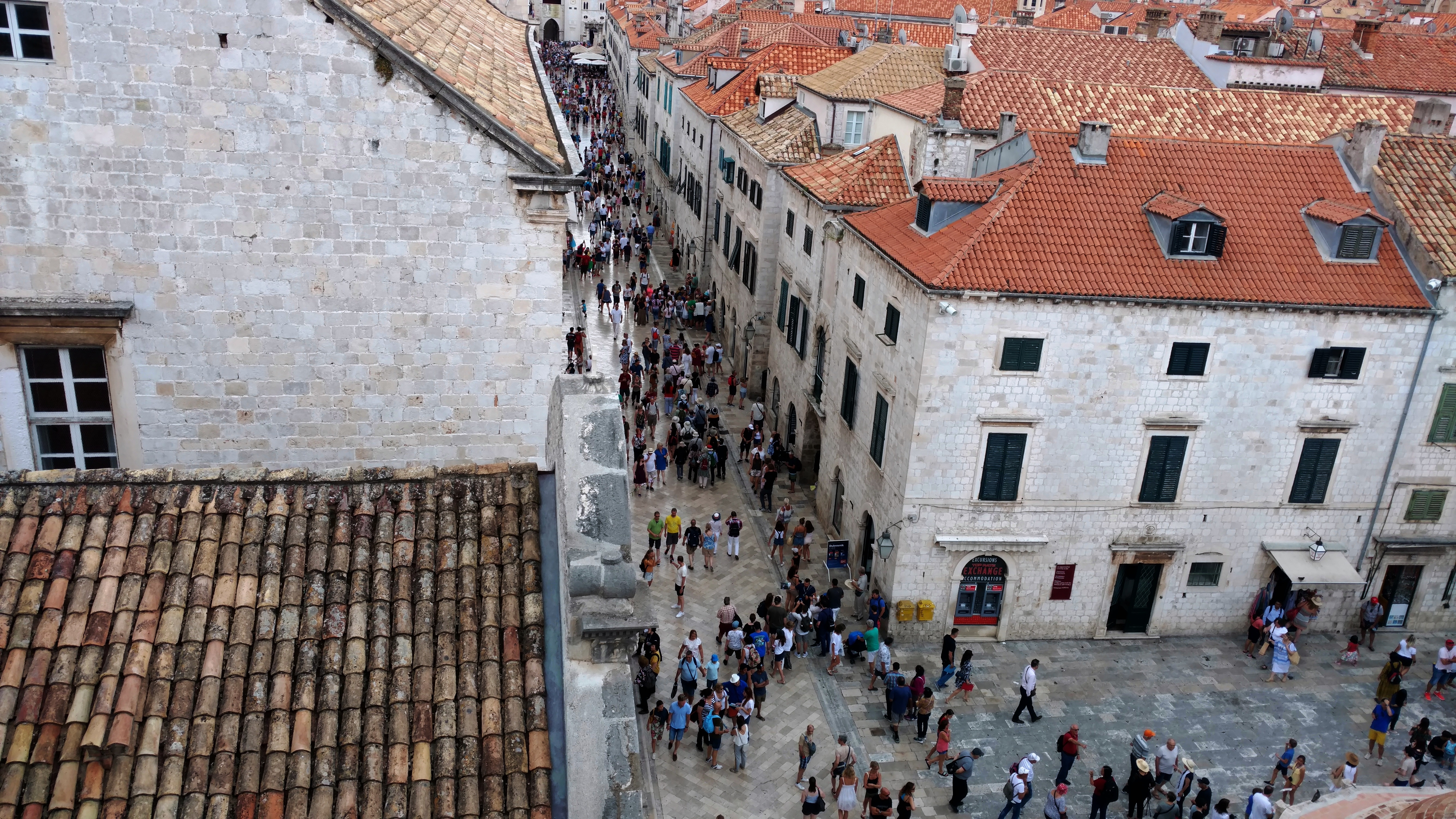 The crowds pick up after 11am. Get an early start. (L.Compisi)
The crowds pick up after 11am. Get an early start. (L.Compisi)
More recently, in 1991, the city of Dubrovnik was laid to siege for 7 months during the Yugoslav Wars (1991-2001). Nearly 60% of its buildings were damaged, in some way, by the 650 artillery rounds that landed within its walls. Little of this is visible now 25 plus years later thanks to the vibrancy of its residents.
Sights of interest:
The Church of St. Basile, the patron saint of Dubrovnik and the protector of the Republic of Ragusa, is a beautiful Baroque Church with a large plaza in front of it. The church was built in 1715 by the Venetian architect and sculptor Marino Gropelli.
 The Church of St. Basile, Patron Saint of Dubrovnik (L.Compisi)
The Church of St. Basile, Patron Saint of Dubrovnik (L.Compisi)
The Dubrovnik Marina gives you the sense of living in the middle ages with its protected harbor just outside the walls of the city. Also to enjoy is the walk around the wall which takes about an hour depending upon the number of people walking. It’s just about a mile in circumference.
 From sea level the harbor evokes thoughts of Venice (L.Compisi)
From sea level the harbor evokes thoughts of Venice (L.Compisi)
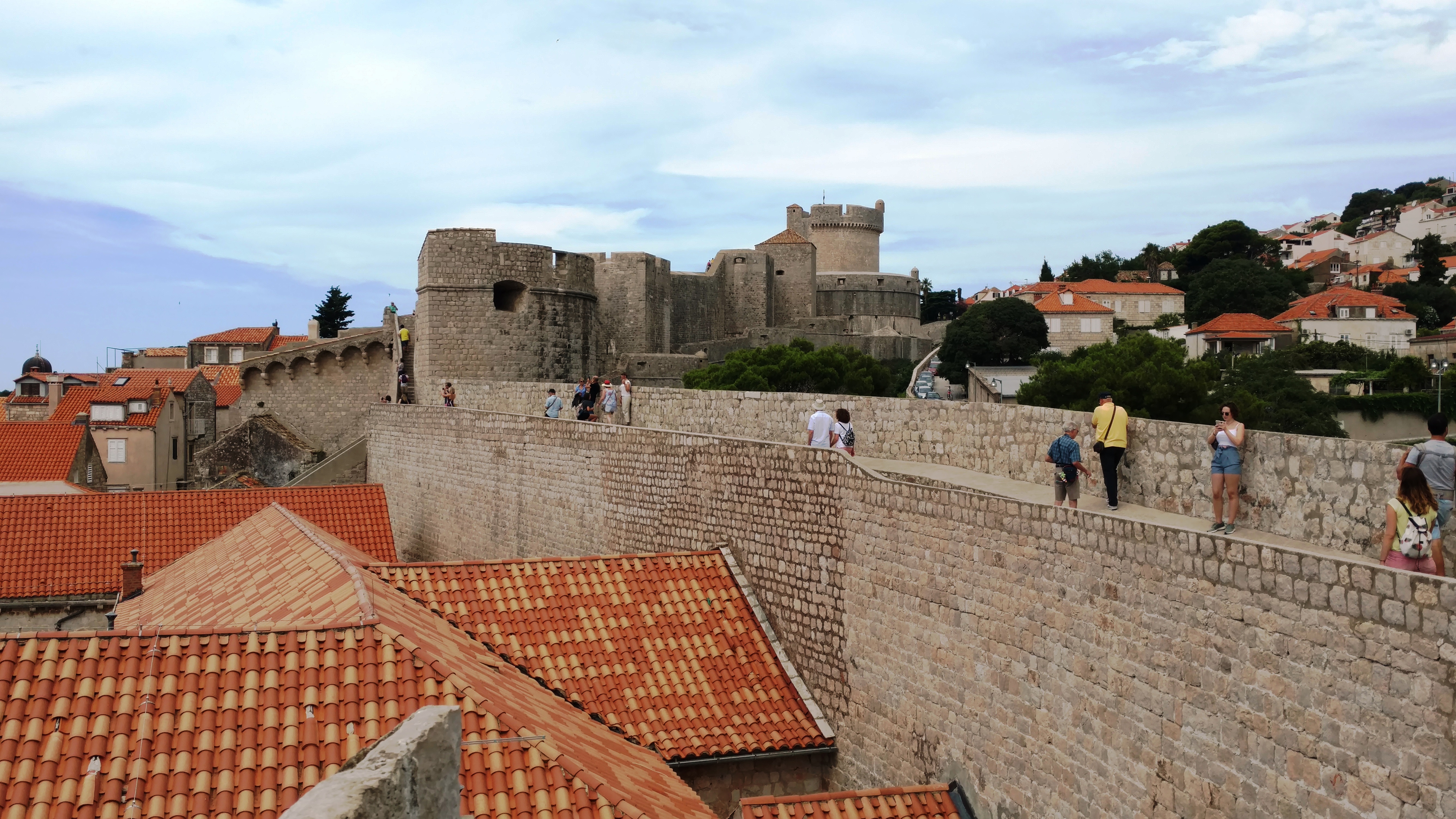 The walk along the wall takes about an hour – depending on traffic. (L.Compisi)
The walk along the wall takes about an hour – depending on traffic. (L.Compisi)
The Church of St. Ignatius of Loyola is also worth a visit. We took the amazing stairs, designed by the Roman architect Pietro Passalacque in 1738 to look like the Spanish Steps in Rome, which lead to St Ignatius Church adjacent to the famous Jesuit school Collegium Ragusinum. The Church of St Ignatius is the work of the famed Jesuit architect and painter Ignazio Pozzo, who worked on the church from 1699 to 1703. The church was completed in 1725 and opened in 1729.
 The Church of St. Ignatius offers beautiful frescoes. (L.Compisi)
The Church of St. Ignatius offers beautiful frescoes. (L.Compisi)
You must find the Buža Bar (Buža = Hole in the Wall) while in Dubrovnik. It is the only bar outside the walls on the seaside of the city and offers drinks only – no food. The views are delightful, if you can find it.
Just outside the walls is the Fortress St. Lawrence (Fort Lovrijenaca), sometimes referred to as Dubrovnik’s ‘Gibraltar’. The fortress includes a theater and is outside the western wall of the city. Historically, this fort was originally constructed in less than 90 days by the residence of the Republic of Ragusa to fend off the Venetians. It succeeded.
 The Fotress of St. Lawrence (L.Compisi)
The Fotress of St. Lawrence (L.Compisi)
Tips:
Even though Croatia is part of the European Union they maintain their own currency, at least for now. Croatia’s unit of currency is the Kuna (Kn.), which is divided into 100 lipa. Despite these facts, Euros may be used in many circumstances.
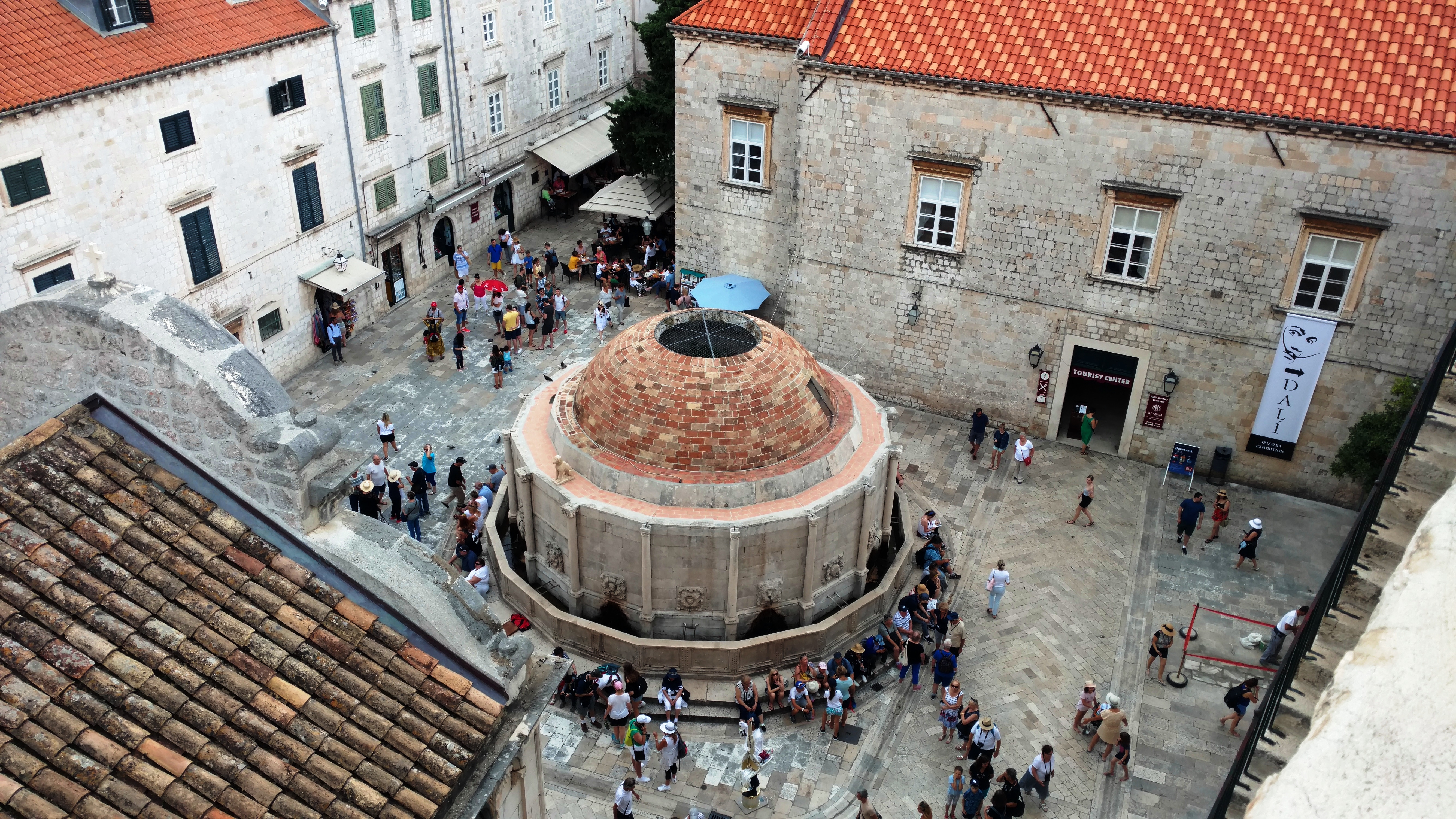 Big Onofrio’s fountain (1438) is supplied by a medieval aqueduct
Big Onofrio’s fountain (1438) is supplied by a medieval aqueduct
Two or three days is all you need to enjoy this beautiful and historic city along the Dalmatian Coast of Croatia. A true world treasure.
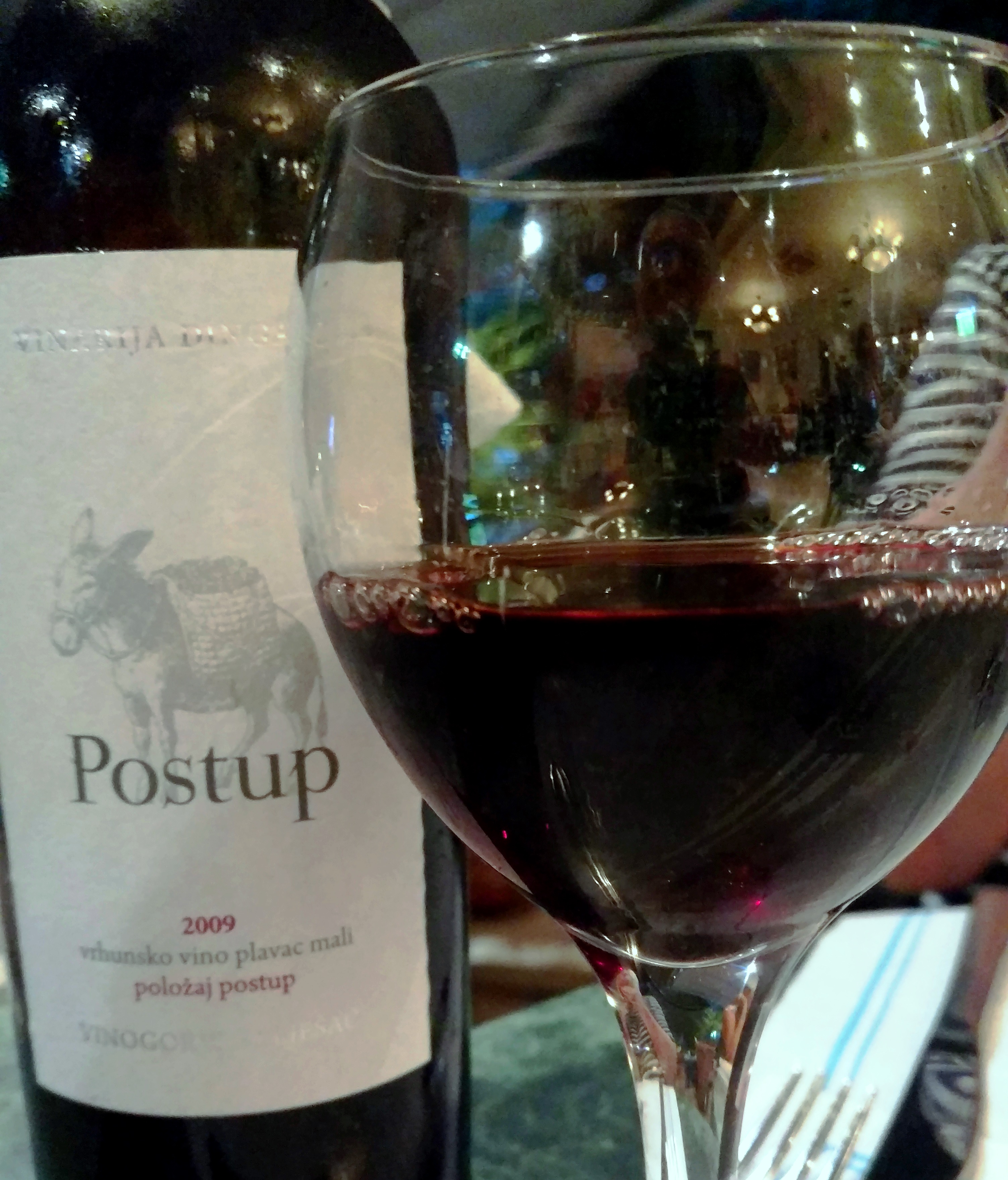
Weather: The weather in Croatia in mid-June through early July was quite warm (90F) with some humidity – a bit steamy. We usually travel to Europe in September and October and I think this would be a much better time to be on the Adriatic coast. May might also good for traveling along the Adriatic coast.
Follow us on Travel Bites, Flights and Sights as we spend the final days of our holiday in the Lavender fields of Provence.
Follow us on Social Media:
Facebook – www.facebook.com/john.compisi
LinkedIn – www.linkedin.com/in/john-compisi-2400421
twitter – @jlc123456
Google+ – plus.google.com/112559155035676313809/posts
Instagram – www.instagram.com/john_compisi/
TrailSpace – www.trailspace.com/people/john-compisi/
Pinterest – www.pinterest.com/jlc123456/